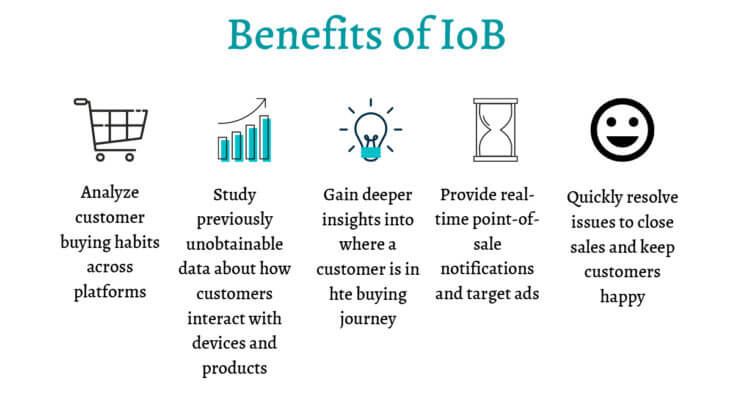Internet of Behaviour (IoB) is extended from the Internet of Things (IoT). In general, the Internet of Behaviour is the use of data to change behaviors. In 2021, IoB will become prevalent and by 2023, it’s predictable that the individual activities of 40% of the global population will be tracked digitally to influence their behaviors.

IoB is a combination of technology, data analytics, and behavioral science. We can divide behavioral science into four main areas that we consider when using technology, emotion, decision, augmentation, and companionship.
The IoB has gained attention more recently, thanks to Gartner naming it among the world’s biggest strategic technology trends for 2021. “The Internet of Behaviour captures the ‘digital dust’ of people’s lives from a variety of sources, and that information can be used by public or private entities to influence behavior,” according to the research firm.
Gartner also predicted that 40% of people globally (more than three billion people) will have their behavior tracked through the IoB by 2023 and that by the end of 2025, more than half of the world’s population will be subject to at least one IoB program, whether it be commercial or governmental.
According to him, the Internet of Behaviours can collect, combine and process data from many resources:
- Social media
- Track position
- Commercial customer data
- Implement a public domain of facial recognition
- Civilian information processed via government agencies & the public sector.
And as more of it can be gleaned from our daily activities, the IoB will capture more information about our behavioral patterns and choices. And by understanding this data, one can gain a significantly more granular understanding of people’s behavior than was previously possible, which can enable interested parties to utilize it for a variety of use cases. “Internet of Behavior (IoB) will be used to link a person digitally to their actions,” Gartner predicted. “For example, linking your image as documented by facial recognition with an activity such as purchasing a train ticket can be tracked digitally.”
But when do the consideration for public welfare and concurrent sacrifice of private freedom become problematic? Clearly, there are broad, clear ethical implications that arise from such technology. Consuming copious amounts of alcohol, for example, may not represent the ideal behavior from a health perspective or even from the standpoint of peace and order throughout the wider community, but it may well maximize the individual’s personal utility.
And what about those with untreated addictions and compulsions? Will an online shopping addict’s behavior be easily detectable, and will she receive the appropriate treatment on time? Or will her multiple purchases lead only to a worsening of her condition as retailers monitoring her behavior through the IoB continue to offer her ever more enticing deals?